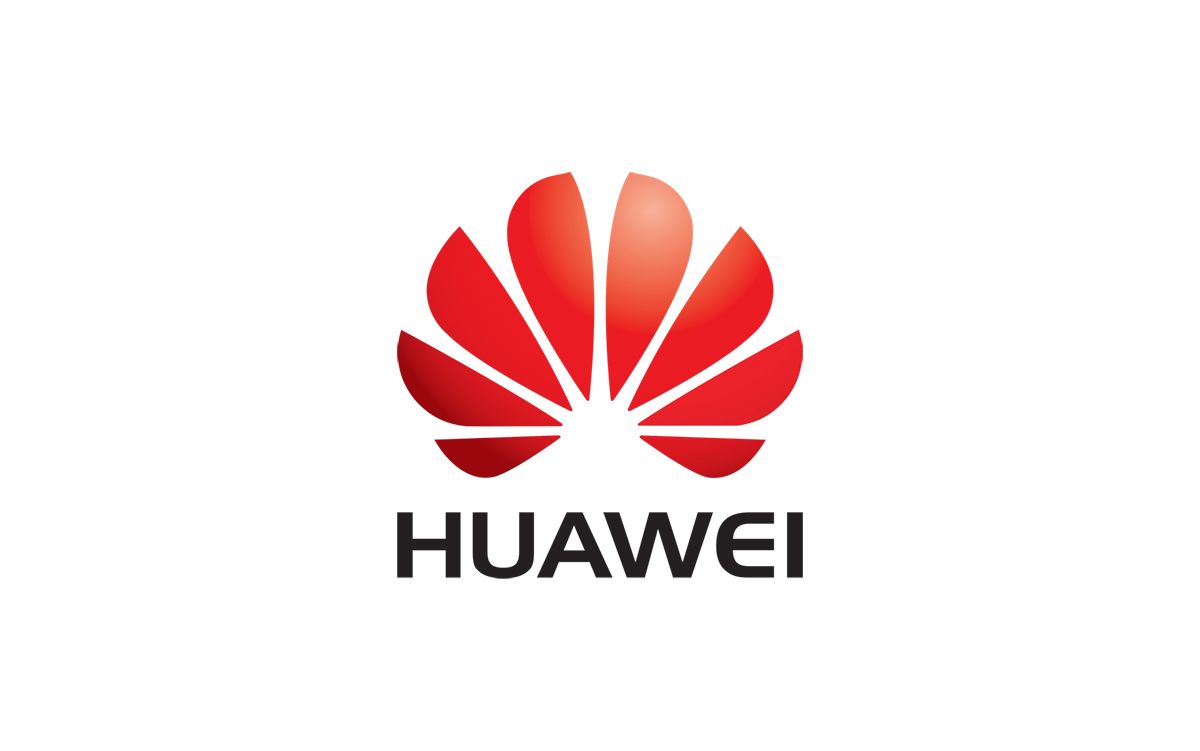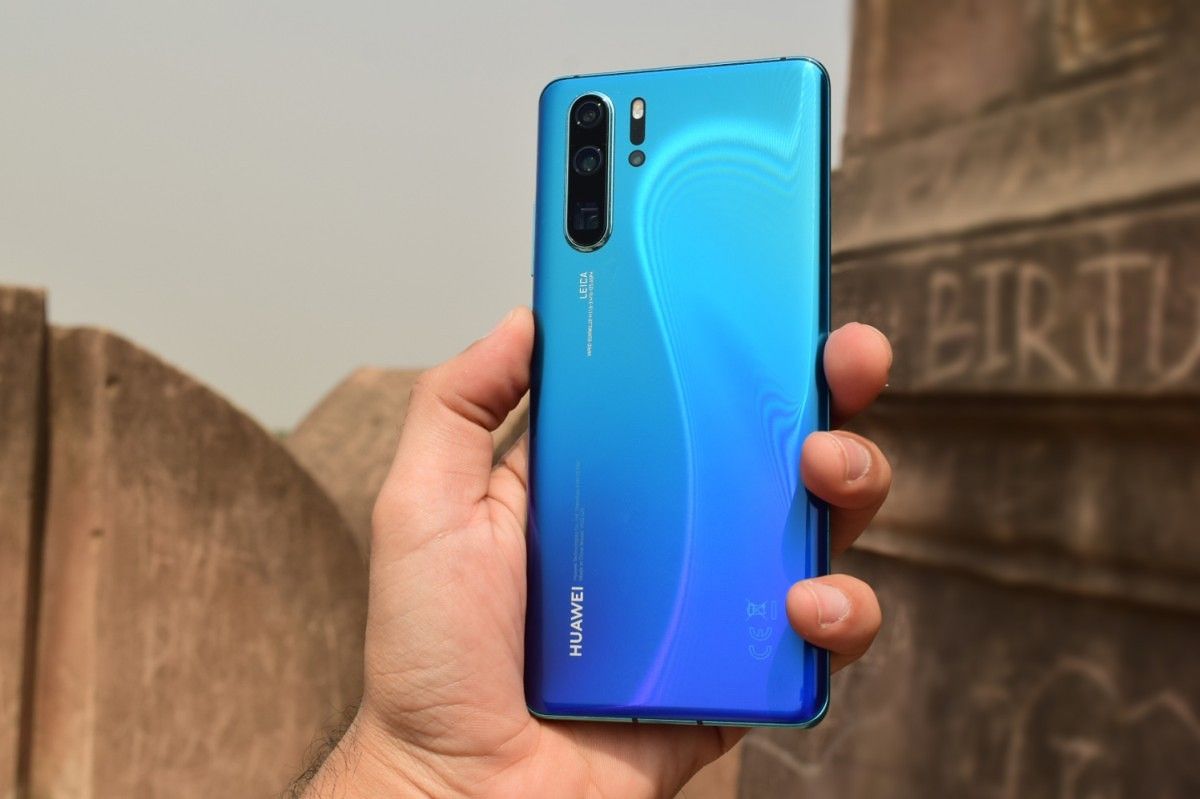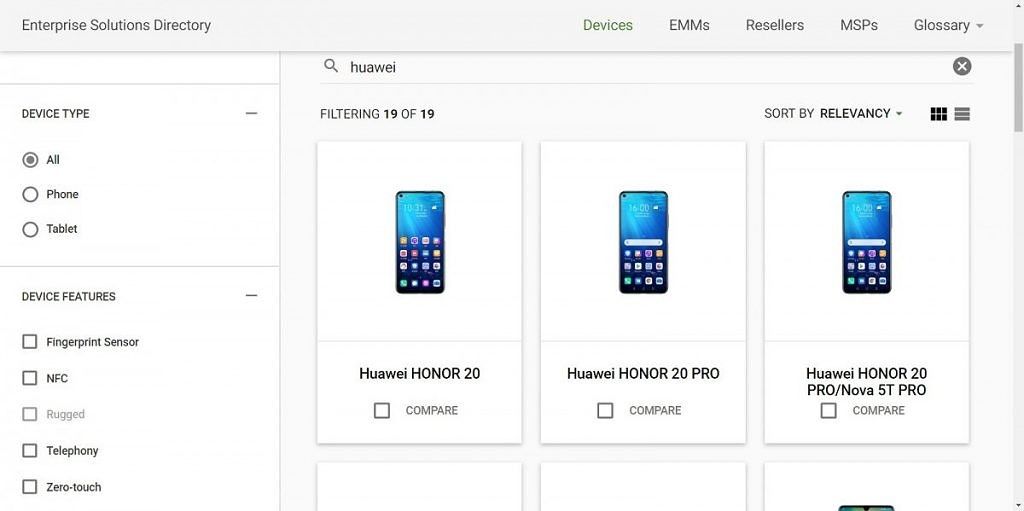Update 14 (03/11/2020 @ 09:40 AM ET): The Tump Administration has once again extended Huawei's temporary license, but this time for another 45 days only.
Huawei is among the most valued Chinese companies and one which has an empire fanning out in all directions. Besides claiming the number two spot in terms of smartphone sales worldwide, Huawei is among the leading suppliers for telecommunication equipment and a driving force in the adoption of 5G. But for certain reasons, the company has been under the gunsight of the Trump administration, which has repeatedly alleged that Huawei's smartphones and telecom equipment are potentially being used for espionage. Citing founder Ren Zhengfei's previous association with the Chinese army, the U.S. government has barred government agencies as well as their private contractors from using any Huawei product, and also pursued allies to do the same.
With escalating diplomatic tension between the two countries, President Trump declared a national emergency and passed an executive order to restrict companies in the U.S. from supplying products to Huawei last week. While the Chinese giant claimed to have a decent stockpile of hardware goods and seemingly felt at ease even with these restrictions in place, a recent disclosure from Google puts Huawei's prominence in the market at stake. As part of the blacklisting by the government, Google has removed Huawei from the Android partner program, suggesting that the latter will no longer have "access to proprietary apps and services from Google," Reuters reported.
Google is currently "reviewing the implications" of the executive order from the White House, but for now, Huawei will reportedly be unable to install Google Play Service on the smartphones henceforth. The crackdown bars Huawei from applying for evaluation of devices under the Compatibility Test Suite (CTS), which any OEM must pass to be able to use the Android branding on its devices and provide services like the Google Play Store, YouTube, Google Search, Chrome, etc. out-of-the-box.
Users will not be able to just side-load APKs for these services because Google prohibits CTS-unverified devices from running its apps. Besides Google apps, all the others that use Google's APIs, to facilitate log-in, for instance, will also be blocked on smartphones by Huawei and sub-brand Honor.
For the existing Huawei devices, Google has confirmed users will continue to be able to update apps through the Google Play Store. However, the blacklisting also prohibits Huawei and Honor from sending out newer updates to their smartphones, and if it does, it will be forced to remove Google Play Services and Google apps from the existing devices too.
As a result of this ban, Huawei will not have access to the code for monthly Google security patches before the public release. Furthermore, Huawei and Honor can no longer be a member of the Android beta programs starting with the next commercial release of Android i.e. Android R. If Huawei intends to move ahead with updates and brings users onboard the Android R bandwagon, it will have to wait until the public release which happens around August every year.
Fundamentally, the only way Huawei can now continue using Android onto its smartphones is building its own custom version of Android using AOSP (Android Open Source Project)Â code, exactly how developers of custom ROMs do. Unlike custom ROMs, however, Huawei might not be able to strap GApps along with the package without going unnoticed by Google.
All in all, the situation is really bad for Huawei. The only plausible option it has for now is to either finally start rolling out its own operating system that it has reportedly been working on, in the anticipation of the day when the U.S. finally obstructs its usage of Android. That might be a challenging shift since most Huawei users are habitual of Android and the Google ecosystem. But, so long as the operating system resembles Android in terms of experience and allows the installation of Google apps, it should be useful. However, we haven't seen any previews yet, which means that it might not be ready for use just yet.
Alternatively, Huawei could continue to tinker with Android and use AOSP builds to continue providing EMUI updates. However, in that case, it will not be able to support Google Play Services and other Google apps. This will limit the users to rely on Huawei's AppGallery, which has a relatively smaller number of apps, even though that wouldn't resolve the issue with Google apps.
Overall, the condition is really limiting for Huawei, essentially confining it to China, where Google's services are already banned by law. This executive order crushes Huawei and Honor's presence, not just in the U.S., but basically every market where devices are shipped with Google services pre-installed. Given that the U.S. government already has a strict view of the company, we do not expect any relief in the coming months. Earlier, Huawei had also shared its plans to sue the U.S. government but a favorable decision may take several months or even years.
For now, this step reeks of the upcoming death of another smartphone giant.
Update 1: Qualcomm, Intel, Xilinx, Broadcom break trade ties with Huawei
After the report of Google limiting its software exchange with Huawei, American chipmakers Qualcomm, Broadcom, Xilinx, and Intel have announced that they will cede to the executive order by the U.S. government and limit supplies to Huawei. Huawei “is heavily dependent on U.S. semiconductor products and would be seriously crippled without supply of key U.S. components,†analyst Ryan Koontz told Bloomberg. As mentioned above, Huawei does seem to have stockpiled enough chips to keep production going for the next three months. However, the ban may take longer to be lifted.
Among the four chipmakers, Intel Huawei's the primary supplier for chips used in its data centers. Additionally, Intel also provides processors for Huawei's Matebook series of laptops. Qualcomm sells it Snapdragon SoCs for various entry-level devices like the Honor 8C as well as some network chips. Qualcomm also licenses aptX codec for Bluetooth audio to Huawei. Meanwhile, Xilinx provides programmable chips for networking while Broadcom supplies packet switching chips for telecom equipment.
In all, there are more than 30 companies in the U.S. considered as "core suppliers" by the company, and all of them are likely to follow the same route.
Update 2: Official response
Following the debacle, the Chinese company has officially shared a response on the matter. Here's how it goes:
"Huawei has made substantial contributions to the development and growth of Android around the world. As one of Android's key global partners, we have worked closely with their open-source platform to develop an ecosystem that has benefitted both users and the industry.
Huawei will continue to provide security updates and after sales services to all existing Huawei and Honor smartphone and tablet products covering those have been sold or still in stock globally.
We will continue to build a safe and sustainable software ecosystem, in order to provide the best experience for all users globally."
Source: WinFuture
Update 3: Honor 20 Launch unaffected
Huawei's Honor has announced that in spite of the on-going turmoil between the U.S. government and the rescinding act from Google and other partner corporations, tomorrow's launch of the Honor 20 series in London remains unaffected.
Update 4: Huawei Granted Temporary License
Barely 24 hours after news broke that Google revoked Huawei's Android license, plunging the tech sphere into chaos, the U.S. Commerce Department told Reuters that Huawei will be granted a "temporary general license." This license, which lasts until August 19th, allows Huawei to "maintain existing networks and provide software updates to existing Huawei handsets." The license does not allow U.S. companies to work with Huawei on new products, however.
To be clear, this temporary license only grants Huawei a reprieve from the U.S. trade ban. We have yet to see if Google has temporarily restored Huawei's Android license, though that's likely going to happen given that the alternative is chaos and uncertainty for hundreds of millions of Android users worldwide. If Huawei is once again allowed to become a GMS Partner, then the company can proceed with releasing its planned updates on schedule.
Although Huawei likely has much of its work already completed for the next EMUI version based on Android Q, it's unlikely the company will release the update if it cannot ship Google Play apps and services with the release. We'll have to wait and see what happens to Huawei after August 19th.
Update: The full text of the Temporary General License can be found here. Thanks Roland Quandt!
Update 5: Working 'closely' with Google
After the U.S. Commerce Department gave the Chinese manufacturer some temporary relief, it hit back at the U.S. for its bias. Calling this an act of "bullying" by the Trump-led U.S. government, Huawei told Reuters that it is working "closely with Google" to understand the impact of the ban as well as to work out a solution in order to mitigate the impact on consumers.
Abraham Liu, Huawei's chief representative to the EU Institutions and VP for the European Region, told media that Google has "zero motivation to block us." He remarked, " it is an attack on the liberal, rules-based order."
The episode has taken an interesting turn in less than two days and we promise to keep you updated at every single step.
Source: Reuters
Update 6: Google reverses decision
Following the U.S. Commerce Department's decision to grant mobile phone companies a 90-day license to work with Huawei, Google has reversed their decision. The company will now send software updates to Huawei phones until August 19th.
“Keeping phones up to date and secure is in everyone’s best interests and this temporary license allows us to continue to provide software updates and security patches to existing models for the next 90 days.†- Google spokesperson
The Commerce Department will reassess the situation after the 90-day license expires. At that point, Google will most likely make the same assessment and decide how to move forward. For the time being at least, Huawei's Android phones are safe.
Source: CNBC
Update 7: Carriers dropping Huawei
UK carriers EE and Vodafone have dropped Huawei phones from their 5G launch plans. Both carriers were planning to launch the Huawei Mate X 5G with their 5G network rollout. The carriers point to long-term usability for their customers as a reason for pulling the device.
On top of the UK carriers, SoftBank in Japan and Chunghwa Telecom in Taiwan have also dropped Huawei devices, including the Huawei P30 Lite and Huawei P20 Lite. South Korea's KT is also considering halting sales and NTT Docomo in Japan has halted pre-orders of the Huawei P30 Pro.
Source: The Verge / Source: Nikkei Asian Review
Update 8: Removed from Android Enterprise Recommended
Android Enterprise Recommended is Google's program for certifying devices that are considered secure and safe for enterprise. Google has now removed all Huawei devices from the website, including the old Nexus 6P. Other devices that were in this list included the Huawei Mate 10, Huawei P10, Huawei Mate 20, and the MediaPad M5 tablet.
Source: 9to5Google
Update 9: Huawei answers questions
Huawei has responded to a number of common rumors on the Huawei Answers page. You can read them below.
Update 10: Huawei devices have been added back to the Android Enterprise Recommended website
In a strange turn of events, Huawei devices have been added back to the Android Enterprise Recommended website. Devices that have been re-added so far include the Huawei Mate 20 X and Honor devices like the Honor 20 Pro.
What makes this development strange is the fact that the US Government was still yet to make a decision on the pending license applications from US companies to resume business with Huawei. Google is also quite opaque with its additions to and removals from the Enterprise website, so we are not entirely sure about what is happening here. We'll keep our readers updated if the trade ban has been lifted or if Google has been granted a further license.
Source: Android Enterprise Recommended
Update 11: Temporary License Extended
Originally reported by Reuters last week, it is now confirmed that the US Commerce Department is postponing the trade ban on Huawei for 90 more days. The temporary license that allows US companies to continue working with Huawei was set to expire today.
"As we continue to urge consumers to transition away from Huawei's products, we recognize that more time is necessary to prevent any disruption. Simultaneously, we are constantly working at the Department to ensure that any exports to Huawei and its affiliates do not violate the terms of the Entity Listing or Temporary General License."
- Wilbur Ross, Secretary of Commerce
46 additional Huawei affiliates are said to have also been added to the entity list, though that has not been confirmed. Huawei has not yet released a statement on the situation.
Source: CNET
Update 12: Temporary General License Extended (Again)
Unsurprisingly, the Trump administration has extended Huawei's Temporary General License for another 90 days, according to Reuters. This will allow the Chinese tech giant to continue working with U.S. companies in a limited capacity. The goal of the initial Temporary General License extension was to minimize the harm on network operators in rural America, as many were dependent on Huawei for telecommunications equipment. This new extension, per Reuters, was intended to only last for 2 weeks but was extended to another 90 days due to unspecified "bureaucratic issues." The Trump administration has still not decided whether they will grant individual U.S. companies licenses to sell components to Huawei, however. The ban is now postponed until February 16, 2020, but we wouldn't be surprised to see yet another extension come next year.
In terms of Huawei's smartphone business, the extension of the TGL means they can continue to support existing devices but cannot launch new devices with Google certification.
Update 13: Temporary General License Extended (Once Again)
Unsurprisingly (again), the Trump administration has extended Huawei's Temporary General License once more. However, this extension is only for 45 days, as reported by CNet, which is half the period of previous extensions.
The license is being extended to prevent interruption of existing network communication systems in rural U.S. regions and permit global network security measures. The 45-day extension is necessary to allow existing telecommunication providers -- particularly those in rural US communities -- the ability to continue to temporarily and securely operate existing networks while they identify alternatives to Huawei for future operation.
The ban is now postponed until March 31, 2020, but we wouldn't be surprised to see yet another extension, albeit of smaller duration.
Update 14: Temporary General License Extended (Yet Again)
The Commerce Department has once again extended the Temporary General License. This extension has come in before the previous extension expired on March 31, 2020. The new extension is once again extending it by a further 45 days.
[blockquote author="U.S. Commerce Department"]The U.S. Department of Commerce’s Bureau of Industry and Security (BIS) announced today it was seeking public comments on March 10-25, 2020 the continuing need for, and scope of, possible future extensions of the Temporary General License (TGL) for Huawei Technologies Co. Ltd. and its non-United States affiliates (Huawei) on the Entity List. At the same time, the Department extended the TGL through May 15, 2020 to provide for this opportunity for public input.
The initial TGL from May 2019 and the three extensions that followed were intended to allow time for companies and persons to shift to alternative sources of equipment, software, and technology (e.g. those not produced by Huawei or one of its listed affiliates). Â The current extension expires on
April 1, 2020 and the request for public input by March 25, 2020, demonstrates the Department is trying to find a permanent solution.[/blockquote]
Source: Department of Commerce



